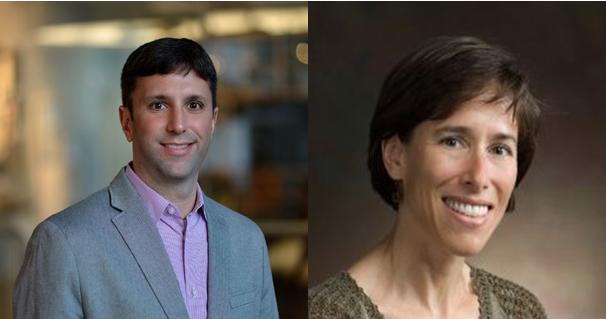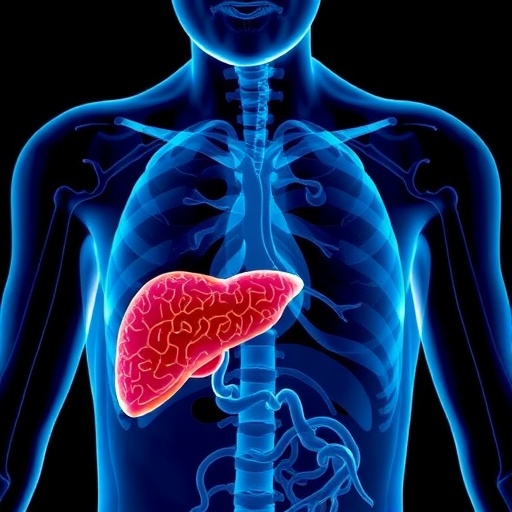
Credit: Baylor College of Medicine
Acute lymphoblastic leukemia (ALL), is the most common childhood cancer. Children with trisomy 21 (Down syndrome) are 10 to 20 times more likely to develop ALL than children without Down syndrome. Historically, children with Down syndrome and ALL had more complications from treatment and a poorer outcome. However, outcomes are improving as we learn more about ALL in Down syndrome and how to best provide treatment and supportive care.
At Baylor College of Medicine, Dr. Karen R. Rabin and Dr. Philip J. Lupo have been investigating the genetic underpinnings of why there is higher risk of ALL in Down syndrome.
“Children with Down syndrome stand out to me as a subpopulation within ALL that is still a little bit of a mystery. We don’t understand why they have an increased risk of leukemia, although this has been recognized since the 1950s,” said Rabin, associate professor of pediatric hematology and oncology and member of the Dan L Duncan Comprehensive Cancer Center at Baylor College of Medicine.
Although there have been a number of ideas to explain this mystery, the jury is still out. In this study, Rabin, Lupo and their colleagues uncovered new clues that hint at explanations for this unsolved mystery.
“We conducted a genome-wide association study (GWAS) that enabled us to look for genetic differences between children with Down syndrome and children with Down syndrome with ALL that might explain the increased susceptibility to ALL in Down syndrome,” said Rabin, who also is director of the Leukemia Program at Texas Children’s Hospital. “The reasoning was that if we found cases of Down syndrome/ALL with a higher percentage of certain gene variants that were not present in children with Down syndrome who did not have ALL, then we could infer that those genetic variants may be important for developing ALL.”
It was a long project. To conduct a GWAS type of study the researchers needed to assemble a large number of cases and controls. It took several years, but finally they put together about 500 cases (Down syndrome/ALL) and over 1000 controls (Down syndrome/no-ALL). They achieved these numbers thanks to collaborations with groups from other institutions.
The results
Previous GWAS studies had looked into the genetic variants that increase the risk of ALL in the general childhood population (children who do not have Down syndrome). These studies had identified several genes associated with a higher risk of ALL.
“We found four genetic variants that were strongly associated with ALL risk in children with Down syndrome. While these genes have been previously identified in studies of ALL among children without Down syndrome, the effects were much stronger in our study,” said Lupo, associate professor of pediatric hematology and oncology and member of the Dan L Duncan Comprehensive Cancer Center at Baylor. He also is the director of the Childhood Cancer Epidemiology and Prevention Program at Texas Children’s Hospital.
The researchers took a closer look into two of these genes. They found, for instance, that children with Down syndrome carrying a particular variant of the CDKN2A gene have a 1.7 times higher risk of developing ALL than children without Down syndrome who carry the same variant.
“There is something about having the Down syndrome genetic background that changes the effect of that genetic variant,” Rabin said.
The second gene that stood out to the researchers was IKZF1.They looked into the function of this gene, which is known to be involved in the development of B cells, a type of immune cell that typically transforms into leukemic cells in ALL.
They discovered new aspects about this gene that had not been described before. For instance, in the lab the researchers studied the effect of reducing the expression of the IKZF1 gene in cells derived from individuals with or without Down syndrome. They found that reducing IKZF1 expression resulted in significantly higher proliferation rates in Down syndrome than non-Down syndrome cells. One characteristic of cancer cells is their higher proliferation rate, therefore these results suggest a mechanism by which changes in IKZF1 expression may contribute to developing ALL.
Although there is still much to learn, the researchers are optimistic.
“Our findings give us clues to explain why these genes seem to be important for causing leukemia in children with Down syndrome. Having a better understanding of this medical mystery can help us develop tests to identify children who have a higher risk of developing leukemia, and to uncover cellular pathways with the potential of becoming targets for treatment,” Rabin said.
“Our findings will serve as the framework for future assessments that we hope will improve outcomes among these children, and have led to a new study funded by the NIH to further explore the role of genetics on ALL risk in children with Down syndrome,” Lupo said.
###
Find a complete list of contributors to this work, their affiliations and financial support for this project in the article published in the journal Blood.
Media Contact
Molly Chiu
[email protected]
Original Source
https:/
Related Journal Article
http://dx.




